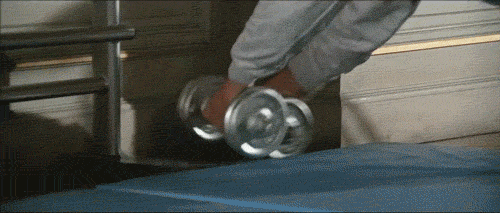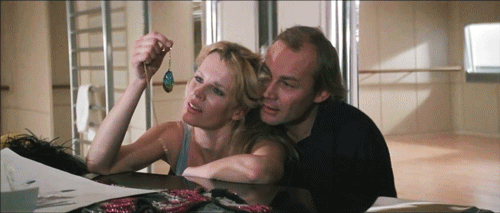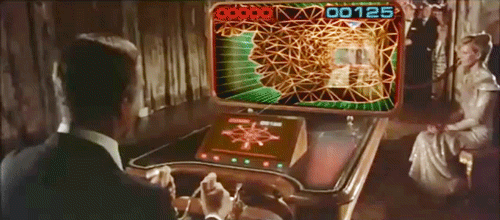The Bootleg Bond Movie ‘Never Say Never Again’ and How It Kept SPECTRE on Ice — Until Now

Sean Connery in ‘Never Say Never Again’
By Oliver Lyttelton
One of the stranger years in James Bond history was 1983. In June, Octopussy premiered with Roger Moore’s superspy battling a rogue Soviet general and an Afghan prince. Then four months later, 007 made an unprecedented return to theaters when Never Say Never Again debuted. This second Bond movie was from a different studio, Warner Bros., and featured an old face: Sean Connery, who returned to the role he made famous after leaving it for the second time in 1971 with Diamonds Are Forever, supposedly swearing “never again.” Even more curious: Never Say Never Again was essentially a remake of 1965’sThunderball, which had 007 facing off against his old rival, the criminal organization SPECTRE. How did this unusual face-off happen? And how did a movie that’s become the off-brand black sheep of the Bond franchise even get made?
The story began nearly 25 years earlier, when James Bond was still just a character on a page. In 1959, Bond creator Ian Fleming was six books into his novel series, and he teamed with Irish writer-producer-director Kevin McClory to come up with an original Bond for the movies. Their creation — later named Thunderball — had our hero battling SPECTRE and its sinister leader, Ernst Stavro Blofeld, who hijacked a nuclear warhead to hold the world ransom.
The film project stalled, and Fleming sold the Bond film rights to United Artists and producers Harry Saltzman and Albert R. Broccoli. (Broccoli’s daughter Barbara retains the rights to this day, with MGM and her company, Eon.) Fleming then turned the Thunderball script into a novel — but neglected to even give credit to his co-writer. When McClory found out, he sued. In 1963, a year after Bond had finally debuted in the movies with Dr. No, Fleming settled out of court and McClory was awarded the literary and screen rights to Thunderball.

Kim Basinger and Klaus Maria Brandauer
Keen to stop a rival production, Saltzman and Broccoli struck a deal with McClory, making him a producer on the 1965 movie version of Thunderball. But there was one big condition: He couldn’t pursue his own 007-related project for another decade. McClory kept his word, but once the 10 years were up in 1975, he got to work on his own Bond saga. He invited Sean Connery to collaborate on the screenplay, hoping that Connery might want to return to his most famous role if he had more creative control. Despite having said in an interview, “I have always hated that damned James Bond. I’d like to kill him,” Connery was intrigued and holed up with the filmmakers for three months to work on a story.
By this time, Roger Moore was several movies into the 007 role. But when McClory got wind that the latest film, The Spy Who Loved Me, was to reintroduce SPECTRE and Blofeld to the franchise, another round of legal wrangling ensued. He succeeded in preventing United Artists and Eon from using those elements, but was countersued by Broccoli and Co., who insisted that any movie McClory made had to be a straight-up adaptation of Thunderball, rather than the more distinct movie he was planning with Connery.
Watch the trailer:
McClory wouldn’t give up, teaming with producer Jack Schwartzman (father of Jason), and hiring writer Lorenzo Semple Jr. (The Parallax View) to pen a new script. The film ended up at Warner Bros., and Connery came back on board, with full approval on casting and the script. McClory hired Irvin Kershner, who’d had a giant hit with The Empire Strikes Back, to direct, and production got underway in September 1982, just a month after Octopussy began shooting.
The film — as it was legally bound to do — sticks fairly closely to the beats of Thunderball, though it tinkers with the details. Here, Bond stumbles upon a plot by SPECTRE, masterminded by Maximilian Largo (Klaus Maria Brandauer), to steal a pair of nuclear warheads. Bond enlists the help of Domino (Kim Basinger), Largo’s mistress, to stop them. There were some notable differences from the original, however. Whereas the first movie was set mostly in the Bahamas, Never Say Never Again moves to the south of France and eventually to North Africa. There’s a lot of discussion of 007’s advancing age — Connery was 53 when the movie was released, though he was still younger than the 56-year-old Roger Moore — and the hero takes on the villainous Largo at a then-high-tech video game in one of the dullest scenes in 007 history.

The worst action sequence in Bond history?
Seen today, the luster’s come off Never Say Never Again. It was undoubtedly great to see Connery back in the role, and the film offered a great villain in Brandauer’s unusually textured Largo (though Max von Sydow is sadly underutilized as Blofeld). Kirshner mostly makes the film look terrific, and you could draw a direct line between Never’s more character-driven, grittier approach and Daniel Craig’s current iteration of Bond.
Still the movie’s action scenes mostly disappoint, Basinger is forgettable as love interest Domino, and the film is turgidly paced. Also, it occasionally feels dated or just silly — from Bond riding a horse off a cliff to a scene where Basinger is sold into slavery to a group of Arab men that feels racist even by 007’s occasionally low standards.
That said, the film picked up mostly good reviews after its release on Oct. 7, 1983, with the New York Times saying it had “noticeably more humor and character than the Bond films usually provide.” Box office was good too: Never had the highest opening weekend of any 007 film up to that point, with $10 million, though it ultimately took in $55 million to Octopussy’s $65 million.
McClory announced further movies in the wake of the success, but with his legal limitations, none ever came to pass. He did team with Sony in 1997 for another attempt, potentially to have been directed by Independence Day’s Roland Emmerich. McClory also joined with the studio on a lawsuit claiming he was the co-inventor of the “screen” Bond and was due a cut of all profits. The lawsuit was dismissed. McClory died in 2006.
Never Say Never Again might have become something of a footnote in the Bond saga (it still isn’t included in boxed set releases, for instance.) But it’s still having ripple effects on 007 now. Seven years after McClory’s death, his estate reached an agreement to return the rights to Thunderball, Blofeld, and the shadowy group SPECTRE to the main Bond universe. So this week, when Spectre, the 24th Bond movie and the fourth starring Daniel Craig, premieres in theaters, we’ll see the return of the evil organization, and just maybe — in the form of Christoph Waltz’s “Franz Oberhauser” — its leader, too. McClory might even have approved. After all, the title of the never-made Never Say Never Again follow-up he announced in a trade ad in 1984? S.P.E.C.T.R.E.
Watch a roundup of Bond’s bawdiest one-liners:
